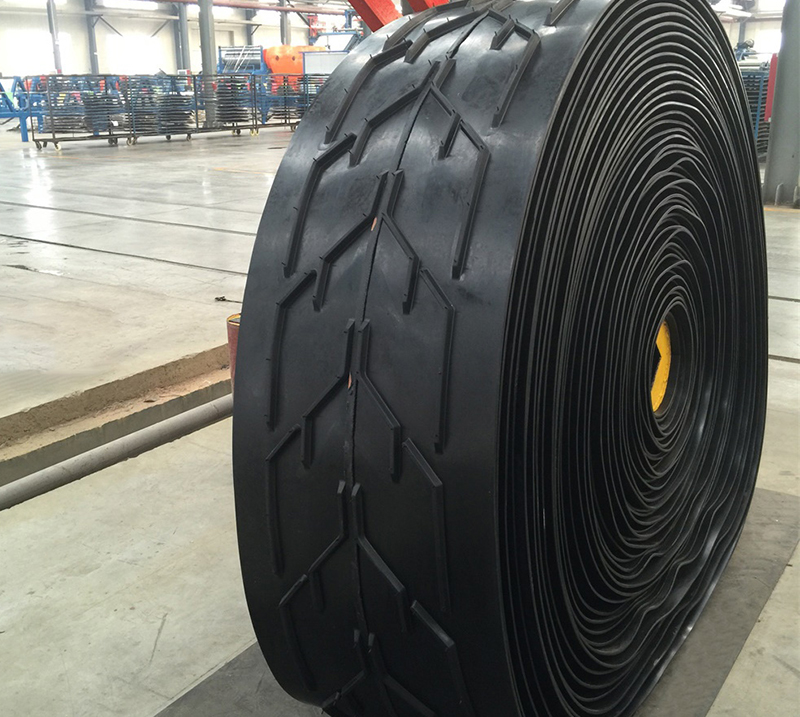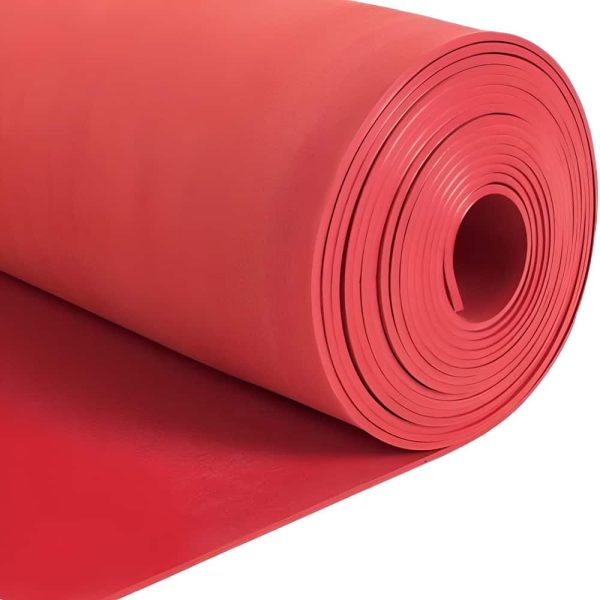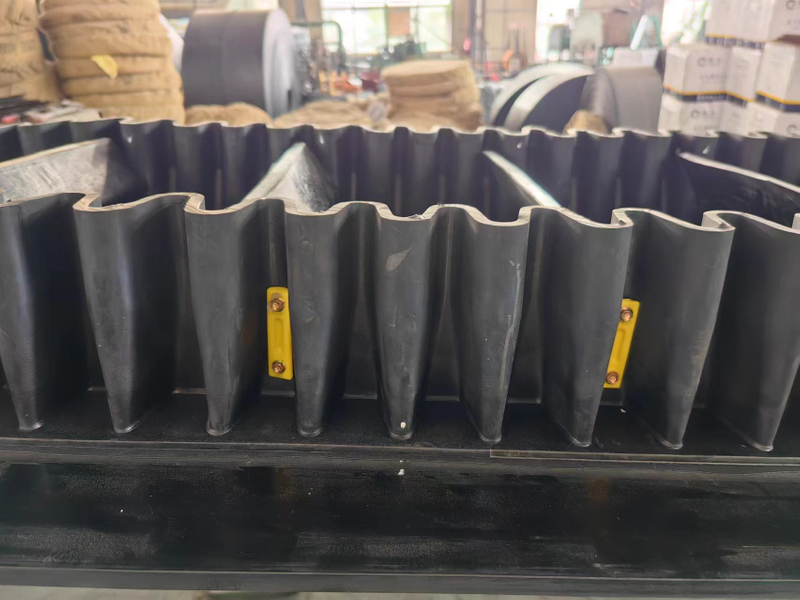UniBelt is one of the leading manufacturers and suppliers of high-quality rubber conveyor belts. we have been committed to providing top-notch products and services to our clients. With years of experience and continuous technological advancements, we have become a trusted name in the industry. We mainly produce light conveyor belts, rubber conveyor belts, PU synchronous belts, rubber synchronous belts, rubber V-belts, plane transmission belts, etc.
We understand the importance of quality in our products. That's why we have a dedicated team of experts who conduct stringent quality checks at every stage of production. Our conveyor belts are made from the finest quality rubber which is sourced from reliable vendors. To ensure durability and strength, we also conduct various tests like tensile strength, elongation, and abrasion resistance.
Our state-of-the-art manufacturing unit is equipped with the latest machinery and technology. This enables us to produce high-quality conveyor belts at a fast pace, without compromising on the quality. We also have a well-equipped research and development department that focuses on continuous improvement and innovation of our products.

Rubber conveyor belt is a type of continuous material handling equipment used for transportation of various goods, products, and raw materials in industries such as mining, construction, and agriculture. It is comprising of a continuous loop of flat rubber or fabric belting that is powered by at least two pulleys and moves goods or materials along the belt. Rubber conveyor belts are essential in providing a safe, efficient, and consistent way of transporting materials within a production facility or from one location to another. They are efficient, versatile, and durable, making them a popular choice for businesses worldwide. With advancements in technology, rubber conveyor belts now come in various sizes, strengths, and materials to cater to the specific requirements of different industries. They are a cost-effective solution for material handling needs, minimizing labor and eliminating the need for multiple equipment.
Rubber Conveyor Belt is an essential component of industrial machinery and plays a crucial role in the transportation and handling of materials and goods. Made from high-quality natural rubber with added reinforcement layers, these belts are designed to withstand heavy loads, high speeds, and harsh operating conditions. They are widely used in various industries, such as mining, agriculture, packaging, and manufacturing, to efficiently move items from one place to another. With its strong grip and flexibility, Rubber Conveyor Belt provides a safe and reliable method for transporting materials and contributes to increasing productivity and reducing labor costs. Its durability and long service life make it a cost-effective solution for businesses worldwide. Enhance your industry's efficiency and productivity with Rubber Conveyor Belt – the ultimate choice for smooth, reliable, and efficient material handling.

Rubber Conveyor Belt. It is commonly used in the transportation and material handling industry for its high strength, durability and flexibility. Our product is made from top quality rubber material, ensuring its superior performance and longevity. Designed with precision and care, it provides efficient and smooth movement of materials, saving time and labor costs. With various sizes and specifications available, our Rubber Conveyor Belt is suitable for diverse applications such as mining, agriculture, and manufacturing. Trust in our reliable product and let it be your ultimate solution for all your conveyor belt needs.
1.Can rubber conveyor belts be used in food processing or other hygienic industries?
Yes, rubber conveyor belts can be used in food processing and other hygienic industries. However, it is important to choose a food-grade rubber material that is specifically designed for use in these industries. These belts are made with materials that are resistant to oils, fats, and chemicals, and are also easy to clean and maintain. They may also have special features such as antimicrobial coatings to prevent the growth of bacteria. It is important to regularly clean and sanitize these belts to ensure food safety and prevent contamination.
2.How does the thickness and width of a rubber conveyor belt affect its performance?
The thickness and width of a rubber conveyor belt can greatly affect its performance in terms of strength, durability, and flexibility. Here are some ways in which these factors can impact the performance of a rubber conveyor belt: 1. Strength: The thickness of a rubber conveyor belt determines its strength and load-bearing capacity. Thicker belts are able to withstand heavier loads and are less likely to stretch or break under stress. This is especially important for conveyor belts used in heavy-duty industries such as mining and construction. 2. Durability: The thickness and width of a rubber conveyor belt also play a role in its durability. Thicker and wider belts are more resistant to wear and tear, as they have a larger surface area to distribute the load. They are also less likely to develop cracks or tears, which can compromise the integrity of the belt. 3. Flexibility: The thickness and width of a rubber conveyor belt can affect its flexibility and ability to conform to the shape of the conveyor system. Thicker and wider belts are less flexible and may not be suitable for curved or inclined conveyors. On the other hand, thinner and narrower belts are more flexible and can easily adapt to the shape of the conveyor system. 4. Tensioning: The thickness and width of a rubber conveyor belt can also impact the tensioning process. Thicker and wider belts require more tension to keep them running smoothly, while thinner and narrower belts may need less tension. Improper tensioning can lead to slippage, tracking issues, and premature wear of the belt. 5. Cost: The thickness and width of a rubber conveyor belt can also affect its cost. Thicker and wider belts are generally more expensive due to the higher amount of material used. However, they may also have a longer lifespan and require less frequent replacements, making them a more cost-effective option in the long run. In conclusion, the thickness and width of a rubber conveyor belt are important factors to consider when selecting a belt for a specific application. It is essential to choose a belt that is suitable for the intended use and can withstand the demands of the conveyor system.

3.How do you properly store and maintain rubber conveyor belts?
1. Clean the belt regularly: Regularly clean the belt with a mild detergent and water to remove any dirt, debris, or residue that may accumulate on the surface. This will prevent the buildup of contaminants that can cause damage to the belt. 2. Avoid exposure to extreme temperatures: Rubber conveyor belts should be stored in a cool, dry place away from direct sunlight and extreme temperatures. Exposure to high temperatures can cause the rubber to deteriorate and crack, while exposure to low temperatures can make the rubber brittle and prone to cracking. 3. Protect from moisture: Moisture can cause the rubber to swell and weaken, so it is important to keep the belt dry at all times. If the belt does get wet, it should be dried thoroughly before being put back into use. 4. Avoid sharp objects: Sharp objects can puncture or tear the rubber, so it is important to keep the belt away from any sharp edges or objects that could cause damage. 5. Store in a flat position: When storing the belt, it should be kept in a flat position to prevent any warping or distortion. If the belt is stored on a roll, it should be rotated regularly to prevent flat spots from forming. 6. Use proper tension: When the belt is not in use, it should be stored with proper tension to prevent it from becoming stretched or distorted. This will also help to maintain the belt's shape and prevent it from developing flat spots. 7. Inspect regularly: Regularly inspect the belt for any signs of wear or damage. If any issues are found, they should be addressed immediately to prevent further damage. 8. Use proper handling techniques: When handling the belt, it is important to use proper techniques to avoid putting unnecessary stress on the rubber. This includes using proper lifting equipment and avoiding dragging the belt across rough surfaces. 9. Follow manufacturer's recommendations: Always follow the manufacturer's recommendations for storing and maintaining the specific type of rubber conveyor belt you are using. Different types of rubber may require different care and maintenance methods. 10. Replace when necessary: If the belt becomes damaged or worn beyond repair, it should be replaced to prevent any safety hazards or disruptions in production.
4.Are there any safety precautions to consider when using rubber conveyor belts?
1. Proper Training: It is important to ensure that all personnel who will be working with or around conveyor belts are properly trained on how to operate and maintain them safely. 2. Regular Maintenance: Regularly inspect and maintain the conveyor belt to ensure it is in good working condition. This includes checking for wear and tear, loose parts, and proper tension. 3. Proper Loading: Do not overload the conveyor belt beyond its recommended capacity. This can cause the belt to stretch or break, leading to potential accidents. 4. Avoid Sharp Objects: Keep sharp objects away from the conveyor belt to prevent damage or punctures. 5. Emergency Stop Buttons: Install emergency stop buttons along the conveyor belt in case of an emergency or malfunction. 6. Lockout/Tagout Procedures: Follow proper lockout/tagout procedures when performing maintenance or repairs on the conveyor belt to prevent accidental start-up. 7. Proper Guarding: Ensure that all moving parts of the conveyor belt are properly guarded to prevent accidental contact. 8. Personal Protective Equipment (PPE): Wear appropriate PPE, such as gloves and safety glasses, when working with or around conveyor belts. 9. Proper Lifting Techniques: When loading or unloading materials onto the conveyor belt, use proper lifting techniques to prevent strain or injury. 10. Follow Manufacturer's Instructions: Always follow the manufacturer's instructions for safe operation and maintenance of the conveyor belt.

5.Are there specialized rubber conveyor belts for specific industries, such as mining or agriculture?
Yes, there are specialized rubber conveyor belts designed for specific industries such as mining and agriculture. These belts are designed to withstand harsh environments and specific applications, such as high temperatures, heavy loads, and abrasive materials. They may also have features such as oil and chemical resistance, flame retardancy, and anti-static properties. Some examples of specialized rubber conveyor belts include: 1. Mining conveyor belts: These belts are designed to handle heavy loads and abrasive materials commonly found in mining operations. They may have reinforced carcasses and special covers to resist wear and tear. 2. Agricultural conveyor belts: These belts are designed for use in the agricultural industry, where they may be exposed to moisture, chemicals, and extreme temperatures. They may also have features such as oil resistance and anti-static properties. 3. Food-grade conveyor belts: These belts are used in the food industry, where hygiene and sanitation are critical. They are made from materials that are safe for food contact and may have features such as easy cleaning and resistance to bacteria growth. 4. Airport conveyor belts: These belts are used in airports to transport luggage and cargo. They are designed to withstand heavy loads and continuous use, and may have features such as flame retardancy and anti-static properties. 5. Package handling conveyor belts: These belts are used in warehouses and distribution centers to transport packages and parcels. They may have features such as low friction surfaces and high grip to ensure smooth and efficient movement of packages. Overall, specialized rubber conveyor belts are designed to meet the specific needs and challenges of different industries, making them an essential component in many industrial processes.
6.Are there any energy-saving benefits to using rubber conveyor belts?
Yes, there are several energy-saving benefits to using rubber conveyor belts: 1. Reduced Friction: Rubber conveyor belts have a lower coefficient of friction compared to other materials, such as metal or plastic. This means that less energy is required to move the belt, resulting in lower energy consumption. 2. Lightweight: Rubber conveyor belts are lightweight, which means they require less energy to move compared to heavier materials. This is especially beneficial for long conveyor systems where the weight of the belt can add up and increase energy consumption. 3. Flexibility: Rubber conveyor belts are flexible and can be designed to fit around curves and corners, reducing the need for additional energy-consuming components, such as pulleys and motors. 4. Low Maintenance: Rubber conveyor belts require minimal maintenance, which means less energy is needed for repairs and replacements. This also reduces downtime, resulting in increased energy efficiency. 5. Noise Reduction: Rubber conveyor belts produce less noise compared to other materials, such as metal or plastic. This can result in a quieter working environment, which can lead to increased productivity and energy savings. 6. Durability: Rubber conveyor belts are highly durable and can withstand harsh environments, reducing the need for frequent replacements. This results in energy savings as less energy is required to manufacture and transport new belts. Overall, using rubber conveyor belts can result in significant energy savings, making them a more environmentally friendly and cost-effective option for material handling.

7.Can rubber conveyor belts be used in wet applications?
Yes, rubber conveyor belts can be used in wet applications. However, the type of rubber used in the belt and the design of the belt will determine its suitability for wet environments. Some rubber compounds are more resistant to water and moisture, making them better suited for wet applications. Additionally, the design of the belt, such as the type of cover and the presence of drainage holes, can also affect its performance in wet conditions. It is important to select a conveyor belt that is specifically designed for wet applications to ensure optimal performance and longevity.

